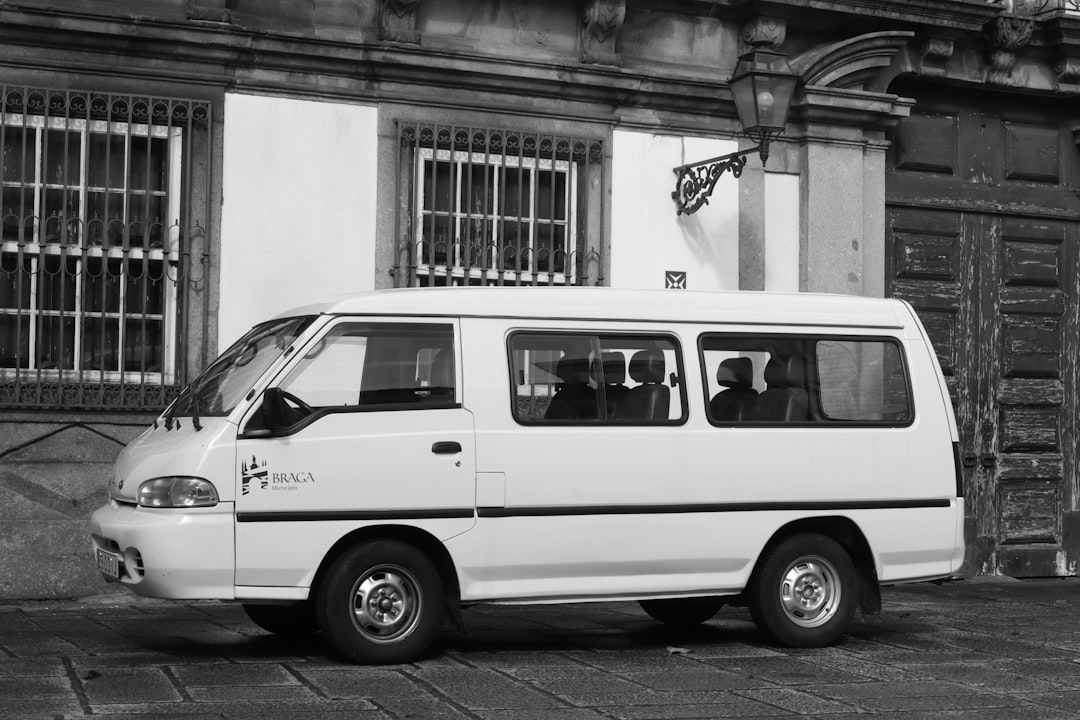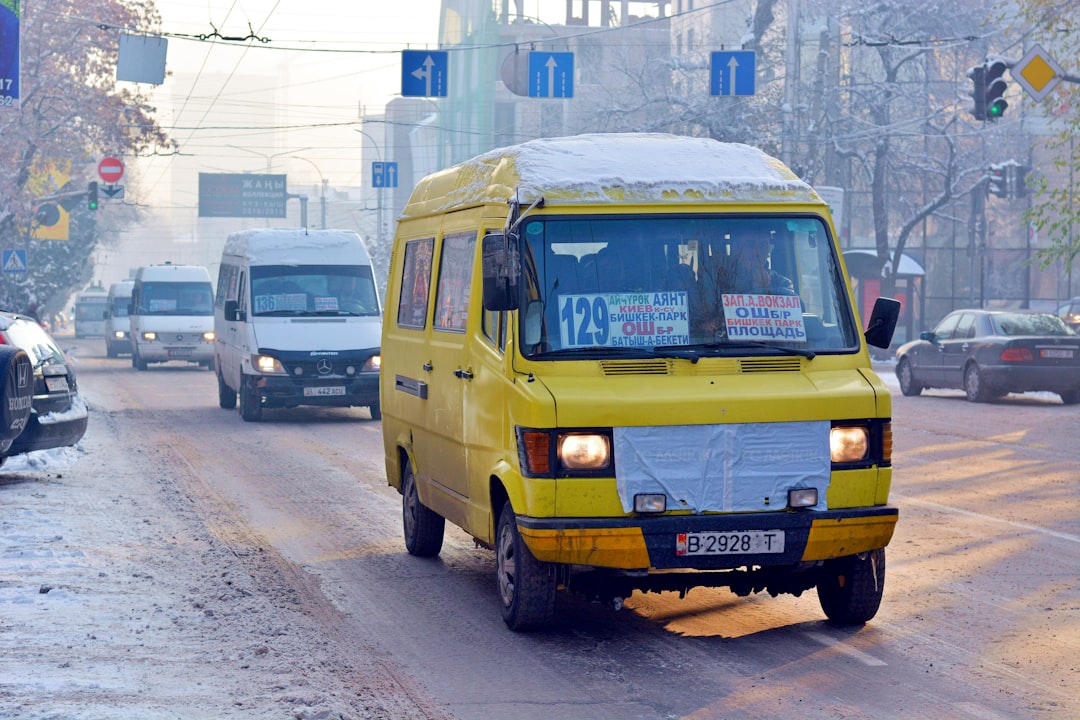

Engage prospects with a scan and streamline customer engagement with FREE QR code marketing tools by Sona – no strings attached!
Create a Free QR CodeFree consultation

No commitment

Engage prospects with a scan and streamline customer engagement with FREE QR code marketing tools by Sona – no strings attached!
Create a Free QR CodeFree consultation

No commitment
In today’s digitally driven world, QR codes have evolved from a novelty to a strategic powerhouse in bridging offline engagement with online action. For vehicle transport services, QR codes represent an impactful, frictionless, and effective way to capture leads, accelerate bookings, and improve operational efficiency without requiring an app download or complex technical setup. For example, adding QR codes to vehicle wraps can turn daily impressions into measurable traffic.
Whether your business handles secure vehicle logistics, door-to-door transport, fleet moves for dealerships and auctions, or promotional marketing for seasonal offers, QR codes make it dramatically easier to convert offline interest into measurable digital action. They can turn printed brochures, billboards, dispatch forms, and vehicle wraps into interactive, trackable touchpoints that feed data directly into your CRM and marketing automation.
This guide delivers a practical framework, proven tactics, and real-world examples that show how to modernize customer experiences, improve marketing attribution with The Essential Guide to Offline Attribution, and maximize conversion rates with QR codes. The goal is simple: surface previously hidden opportunities, reduce missed follow-ups, and make every moment of interest measurable and actionable.

QR codes bridge the gap between physical touchpoints and digital outcomes, making it easier to achieve business goals like increasing quote requests, simplifying booking flows, and accelerating customer support for vehicle transport services. By placing codes on the assets you already use in the field, you can shorten the path from awareness to action and eliminate the friction that causes high-intent prospects to drop off.
A persistent challenge in the industry is losing high-value prospects who engage at event booths, dealership lots, roadside billboards, or through printed handouts but never reach your booking forms or CRM. Without a clear path and tracking, those interactions stay anonymous. QR codes solve this by connecting moments of interest to digital forms, chat, quotes, and support, while capturing data that fuels targeted follow-up and better attribution.
Modern QR solutions make it easy to generate campaign-specific codes, unify scan data with journey stages, and sync results into your CRM. The outcome is a clear link between offline engagement and pipeline growth that you can measure and scale.

Many transportation providers invest in wraps, print collateral, and event sponsorships without knowing who engaged or whether those interactions led to revenue. The result is anonymous traffic, missed follow-ups, and budgets that are hard to justify. QR codes close that loop by turning every physical asset into a measurable digital entry point.
The benefits extend beyond marketing to operations and customer support. From claim handoffs to real-time tracking updates, QR codes reduce confusion and phone call volume while improving customer satisfaction. They allow teams to connect the dots between interest and action across a wide array of physical materials common in this industry, such as invoices, gate passes, bill of lading forms, and on-truck signage.
A practical example: place QR codes on insurance documentation or dispatch packets to connect customers with real-time status trackers, FAQ resources, or immediate chat support. Customers get answers without calling, your team reduces ticket load, and you capture engagement signals for smarter nurturing.

Selecting the right QR format is crucial. Vehicle transport providers often need a mix of marketing and operational flows that reduce friction while delivering measurable outcomes. The right mix ensures you capture data, personalize follow-ups, and support both B2B and consumer audiences effectively.
In this vertical, dynamic QR codes are essential for campaigns that change frequently or require attribution. Static codes can work for evergreen assets, but dynamic codes offer flexibility, auditability, and the ability to correct errors or update destinations without reprinting.
With Sona QR, you can generate and manage all of these formats in one place. Dynamic QR codes allow campaign and destination updates on the fly, while integrated analytics and CRM sync tie each scan to a lead or account for targeted follow-up.

The best opportunities often hide in moments where intent is strong but the next step is unclear. That includes a passerby noticing your wrap, a dealer manager glancing at your banner before an auction, or a consumer reading a dispatch form in their driveway. QR codes turn those moments into measurable actions.
Start by mapping your common offline interactions and identifying where prospects show interest yet fall out of the funnel. Then add QR codes with clear calls to action and trackable links. You will start to see patterns in what channels, placements, and audiences convert best.
As you analyze scan patterns, you will uncover high-performing placements and underperforming assets. Move budget to the standouts, refine messaging on the laggards, and set thresholds for when to retire or reprint.
QR codes deliver value when they help convert interest into action with minimal friction. In vehicle transport, the highest-impact use cases are those that capture demand, improve service visibility, and collect feedback that fuels retention and referrals.
Rather than treating QR codes as a novelty, use them to strengthen your core workflows. Integrate scan events with your CRM, tagging each by channel and intent to enable targeted follow-up via email, SMS, or ads.
This approach not only increases conversion from offline channels but also gives your team actionable signals for Intent-Driven Retargeting. For example, a scan of a secure transport offer can trigger a follow-up sequence with insurance details and a time-bound discount to move the deal forward.
Each scan carries context. You can capture the who, where, and why, then use that data to craft hyper-relevant follow-ups. Done well, QR-driven intent data becomes a durable advantage over competitors who still treat print and field assets as untrackable.
Start by deciding which audiences matter most in your business. In vehicle transport, that often includes individual shippers, dealer groups, rental agencies, fleet managers, and insurance partners. Align your QR codes to the journey stages for each, then tag scans accordingly.
With a platform like Sona QR, each code becomes a smart entry point. You can retarget based on actual behavior rather than assumptions, for example, differentiating dealer principals scanning at morning check-in from individual shippers scanning invoices after delivery. That granularity drives higher conversion and more efficient spend.
QR codes connect offline and online, turning every physical asset into a measurable piece of your marketing engine. When they are integrated across channels, you gain not only higher engagement but also a richer data layer for attribution and optimization.
Look for ways to make each channel actionable in real time. Replace passive calls to “visit our website” with scannable CTAs that match the context and desired outcome. The goal is to reduce friction and improve tracking.
QR codes serve as the offline onramp to your digital marketing engine. With a centralized platform like Sona QR, you can manage codes, monitor performance, and sync scan data with your CRM and ad platforms so that every scan can trigger next best actions automatically.
Start with a single, high-impact outcome that maps directly to revenue or retention. In vehicle transport, that could be increasing instant quote requests from auction signage, capturing door-to-door service confirmations without phone calls, or streamlining review collection from post-delivery invoices. Clarity at this step prevents scattered execution and muddled measurement.
Once you have the outcome, define where the highest-intent offline moments already occur. If your wraps drive frequent awareness, start there. If your events gather dealer prospects, focus on booth signage and handouts. By aligning the use case to a real-world context and audience, you improve scan rates and post-scan conversion.
Static codes are acceptable for evergreen resources, such as a safety manual PDF. For any campaign that demands tracking, editing, or personalization, dynamic QR codes are a must. They enable destination updates, granular analytics, and audience tagging, all without reprinting physical assets.
In transport services, the ability to correct a misprint or update a pricing page after new rates roll out is invaluable. Dynamic codes also unlock A/B testing on destinations and CTAs, which often yields double-digit improvements in scan-to-conversion rates.
Design your QR placements for real-world scanning conditions. Add a clear frame, a benefit-driven CTA, and adequate white space. Ensure contrast between the code and its background, and size it for the viewing distance. For wraps and billboards, that often means larger codes and short CTAs that are legible from a car or sidewalk.
Test scanning in varied conditions. Check at different angles, distances, lighting, and device types. People will scan from vehicles, at night under lot lights, and in direct sunlight at events. Small adjustments to contrast, size, and placement can significantly improve scan rates.
Focus on placements that reliably produce interest but suffer from drop-off due to friction. In this industry, that includes vehicle wraps, dealership and auction signage, service and delivery documents, and event booths. These are precisely the touchpoints where prospects show intent yet often get lost without a fast digital entry.
Tailor CTAs to the moment. A driver passing your truck will not scan a long-form survey, but they may be willing to request a quote or save your contact with a vCard. At an event, attendees may prefer to schedule a follow-up demo rather than complete a full booking form.
Measurement turns QR activity into a growth engine. Track scans by asset, location, and time. Monitor scan-to-form completion rates, drop-off points, and the speed of sales follow-up. Feed these insights into your creative, placement, and staffing decisions.
Set benchmarks and iterate. For example, wraps may average a 0.1 to 0.3 percent scan rate of total impressions, while event signage can hit 1 to 3 percent of booth visitors. With better CTAs, sizing, and lighting, you can often lift conversion by 20 to 50 percent in a few cycles.
This workflow delivers operational clarity. It transforms recurring pain points like missed prospects or anonymous booth visitors into actionable opportunities by making every scan a measurable step in your acquisition pipeline.

A common barrier to growth is the inability to connect offline spend with revenue. Teams invest in brochures, wraps, and mailers but operate on guesswork about which assets work. QR analytics change that by tying each scan to a source, channel, and destination, then linking engagement to pipeline and closed business.
Go beyond vanity metrics. The goal is not only to count scans but to understand the full journey: which placements generate qualified leads, which messages drive bookings, and where prospects fall off. With these insights, you can reallocate budget, improve creative, and tighten follow-up to reduce leakage.
With Sona QR and Sona.com, you can connect anonymous scans to known buyers through consented identity resolution, unify offline and online touches, and apply multi-touch attribution. For deeper context, read The Essential Guide to Offline Attribution.
Sustained success comes from consistent execution and disciplined measurement. The following best practices reflect what works across transport providers that rely on a mix of field assets, events, and direct mail to generate demand.
Focus on clarity and immediacy. The more specific your CTA and the faster the path to value, the higher your engagement and conversion rates will be. Then layer in automation so no scan goes unnoticed or unaddressed.
Following these practices reduces the risk of missed or untracked prospects. It also allows teams to proactively nurture engaged accounts, especially those primed for upsell, cross-sell, or renewal.
QR codes have become foundational marketing and operations tools for vehicle transport services. They turn passive impressions into measurable actions, close offline-to-online gaps, and provide the data needed to optimize spend and improve customer experiences. Teams that adopt QR strategies now gain an edge in capturing demand and attributing revenue across every physical asset.
By integrating dynamic QR codes into wraps, signage, documents, and events, transport providers can deliver faster paths to quotes and support while building detailed audience segments for retargeting. The payoff is tangible: higher scan-to-form completion rates, shorter time to booking, more reviews and referrals, and clear attribution back to the assets that drive results.
Implementing QR codes across your physical and digital touchpoints is no longer optional. With Sona QR, you can generate and manage codes, monitor performance, and connect scan activity to your CRM and ad platforms in minutes. Start creating QR codes for free.
QR codes have transformed vehicle transport services from traditional, static marketing efforts into dynamic, measurable lead generation channels. Whether it’s capturing qualified leads at vehicle pickup points, streamlining customer inquiries, or enhancing the booking experience, QR codes replace cumbersome processes with instant, mobile-friendly interactions that deliver real-time data to optimize your outreach and conversion strategies. Imagine knowing exactly which locations and materials drive the most inquiries—and acting on that insight immediately.
With Sona QR, you can effortlessly create dynamic, trackable QR codes tailored for vehicle transport services, update campaigns instantly without reprinting, and link every scan directly to your sales pipeline. This means no missed leads, improved customer engagement, and more efficient growth. Start for free with Sona QR today and turn every scan into a valuable lead and loyal customer.
QR codes turn physical assets into measurable digital entry points, improve lead capture and booking efficiency, reduce friction in customer journeys, enable real-time tracking and customer support, and provide actionable analytics for marketing optimization.
QR codes provide fast, simple access to quotes, service details, support chat, and tracking updates without requiring website searches or calls, enhancing the customer experience and increasing capture rates.
QR codes can be placed on vehicle wraps, fleet trucks, vans, trailers, dealership and auction lot signage, event banners, direct mailers, and service documentation handouts to capture scans from prospects and customers.
Dynamic QR codes enable attribution by linking scans to specific campaigns, channels, locations, and assets, feeding data into CRM systems and marketing automation for real-time analytics and informed budget allocation.
Use dynamic QR codes with clear, benefit-driven CTAs, size codes appropriately for scanning distance, ensure high contrast and test scanning under varied conditions, assign unique codes per asset, and append UTM parameters for clean tracking.
Use Sona QR's trackable codes to improve customer acquisition and engagement today.
Create Your FREE Trackable QR Code in SecondsJoin results-focused teams combining Sona Platform automation with advanced Google Ads strategies to scale lead generation

Connect your existing CRM

Free Account Enrichment

No setup fees
No commitment required

Free consultation

Get a custom Google Ads roadmap for your business






Launch campaigns that generate qualified leads in 30 days or less.
